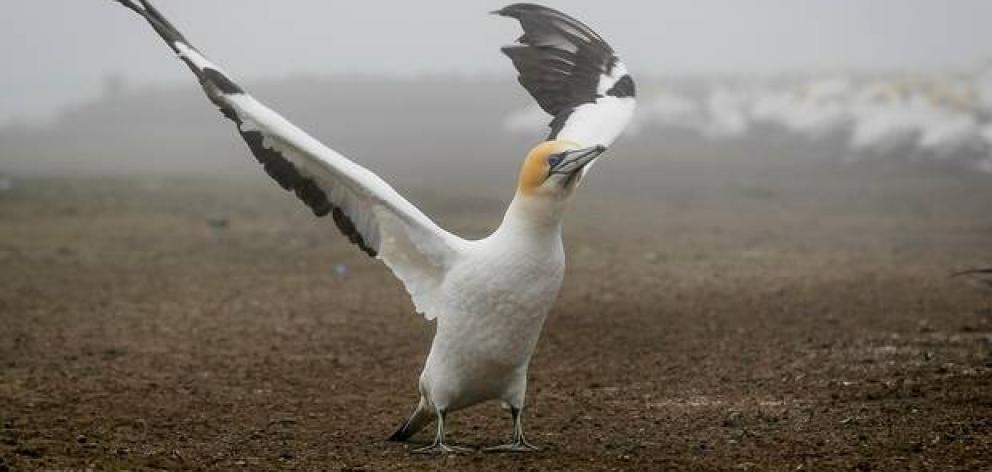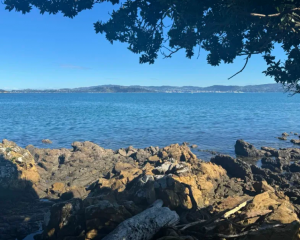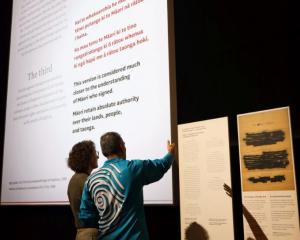
Gannets are understood to have lost nests in a slip at Cape Kidnappers but could be invited to join a trial colony with model gannets, a sound system and home security.
Doc community ranger supervisor Moana Dunlop-Smith said the washout on the Saddle Colony near the cape's eastern extremity "is not a significant event for these birds".
The slip occurred early in the nesting season, and it was not unusual for ground-nesting birds to have their early nesting attempts washed out, she said.
"When birds lose their nests early in the season they generally re-nest.
"For gannets, a replacement egg can be laid within four weeks and this can occur through until January."
"In time this colony, if it continues to grow, will reach carrying capacity for the site and the birds will find somewhere else to set up - perhaps around the corner on the Cape Sanctuary cliffs where they would be welcomed on the trial colony set up there with model gannets, a sound system, and a high level of protection from predators."
"We're confident they'll re-nest," she said.
Hawke's Bay ornithologist and recognised cape gannet-life authority Brent Stephenson said the population of the Saddle colony "seems to have been steadily declining over the last two decades as the edges have slowly eroded".
"At the time the slip happened, it is unlikely there were eggs," he said.
"But, if nest sites were lost, then these pairs will need to establish new nest sites, and this may not happen this year.
"That is the short-term effect," said Stephenson, who did a PhD on the ecology and breeding biology of Australasian gannets at Cape Kidnappers.
"Long-term it will probably not affect the population at all. The pairs will just move to vacant areas near the Saddle, or perhaps even at Black Reef or Plateau colonies."
It is estimated about 6m of land has fallen from the southern side of the colony.
Stephenson said the rocks at Black Reef have drastically eroded over the last 25 years that he had been working in the area, and the birds had "just moved up onto the cliff above the reef".
"So this sort of thing is not that drastic and has been occurring ever since the birds nested in this area," he said.
"Similar has happened at other colonies around New Zealand and other parts of the world. Erosion is a constant phenomenon."
Stephenson said the cape colonies have been increasing in size since they were first noticed in the late 1800s.
"This is almost certainly due to birds having nested there prior to Māori occupation, but having been harvested to the point of local extinction," he said.
"When Cook sailed past there in the 1770s there was no mention of a gannet colony, which means it probably wasn't there."
He said that since the area had become protected birds had recolonised, but over-crowding is not an issue "as the birds have the entire headland to utilise if they so choose".











